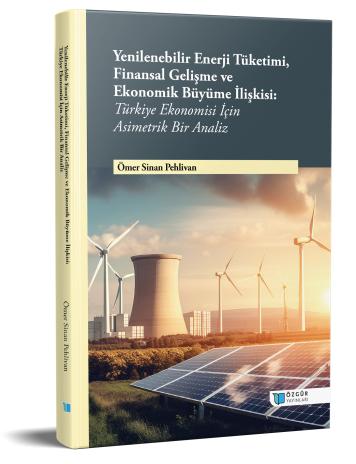
Yenilenebilir Enerji Tüketimi, Finansal Gelişme ve Ekonomik Büyüme İlişkisi: Türkiye Ekonomisi İçin Asimetrik Bir Analiz
İndir
Özet
Türkiye’de 1960-2017 dönemi için yenilenebilir enerji tüketimi, finansal gelişme ile ekonomik büyüme arasındaki ilişkiyi araştırmak için yıllık veriler kullanılmıştır. Yenilenebiir enerji ve finansal gelişmenin yanısıra terorik ve ampirik literatür dikkate alınarak sermaye oluşumu, işgücü ve ticari dışa açıklık değişkenleri de ekonomik büyüme modeline dahil edilmiştir. NARDL eşbütünleşme sonuçları hem t-istatistiği hemde F istatistiğine göre değişkenler arasında bir asimetrik yada doğrusal olmayan bir eşbütünleşme ilişkisinin varlığını tespit etmiştir. Bu sonuca göre; yenilenebilir enerji tüketimi, finansal gelişme, sermaye oluşumu, işgücü, ticari dışa açıklık ile ekonomik büyüme arasında uzun dönemde asimetrik bir ilişkinin varlığı söz konusudur.
NARDL uzun dönem tahmin sonuçlarına göre; uzun dönemde yenilenebilir enerji tüketiminde meydana gelen artışların ekonomik büyümeyi arttırdığı yine aynı şekilde finansal gelişmede meydana gelen artışların da ekonomik büyümeyi arttırdığı sonuçları elde edilmektedir. Ticari dışa açıklıkta uzun dönemde pozitif yönde meydana gelen artışlar ekonomik büyümeyi azaltırken negatif yönde meydana gelen şoklarda ekonomik büyümeyi azalttığı sonucuna ulaşılmıştır. Ancak ticari dışa açıklık + katsayısı ticari dışa açıklık – katsayısından büyük olduğu için + katsayının etkisi yorumlanır. Bu durumda uzun dönemde ticari dışa açıklığın ekonomik büyümeyi azalttığı sonucuna varılmıştır. Uzun dönemde sermaye artışları ile işgücü artışları da ekonomik büyümeyi arttırdığı sonucuna ulaşılmıştır.
Toda-Yamamoto nedensellik testi sonuçlarına göre ekonomik büyümeden sermayeye tek yönlü nedensellik bulunmuştur. Finansal gelişme ile ekonomik büyüme arasında çift yönlü nedensellik bulunmuştur. Ekonomik büyümeden yenilenebilir enerji tüketimine, ekonomik büyümeden toplam nüfusa doğru tek yönlü nedensellik bulunmuştur. Bu nedensellikler anlaşılacağı gibi doğrusal yada simetrik nedenselliklerdir.
Hatemi-J asimetrik nedensellik sonuçlarına göre; sermayenin negatif şoklarından ekonomik büyümenin negatif şoklarına asimetrik nedensellik bulunmuştur. Ekonomik büyümenin negatif şoklarından finansal gelişmenin hem pozitif hem de negatif şoklarına asimetrik nedensellik ilişkisi bulunmuştur.Ekonomik büyümenin pozitif şoklarından iş gücünün pozitif şoklarına asimetrik nedensellik bulunmuştur. Ekonomik büyümenin pozitif şoklarından ticari dışa açıklığın negatif şokuna, ekonomik büyümenin negatif şoklarından ticari dışa açıklığın pozitif şoklarına asimetrik nedensellik bulunmuştur. Ticari dışa açıklığın negatif şoklarından ekonomik büyümenin negatif şoklarına asimetrik nedensellik bulunmuştur. Ekonomik büyümenin pozitif şoklarından kişi başına düşen yenilenebilir enerjinin negatif şoklarına, ekonomik büyümenin negatif şoklarından yenilenebilir enerjinin pozitif şoklarına doğru asimetrik nedensellik bulunmuş olup yenilenebilir enerjinin bütün şoklarından ekonomik büyünenin bütün şoklarına doğru asimetrik nedensellik bulunamamıştır.

